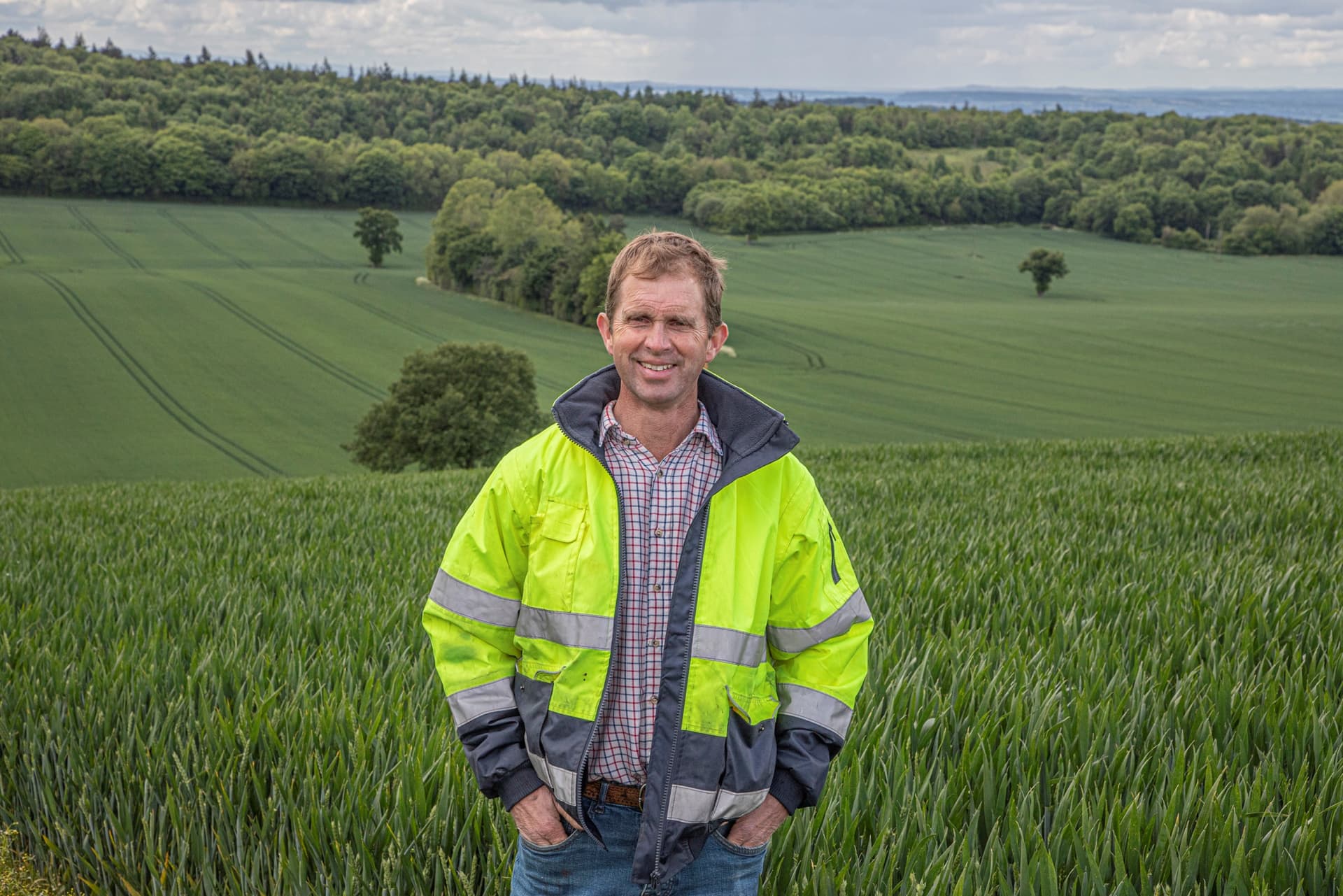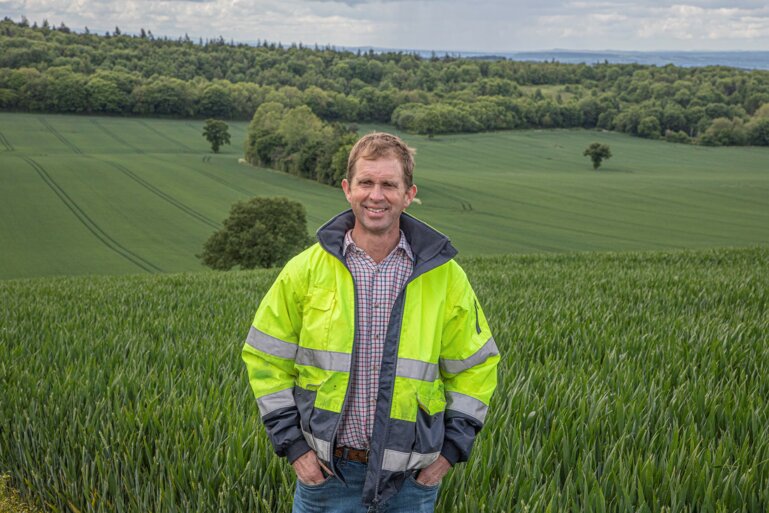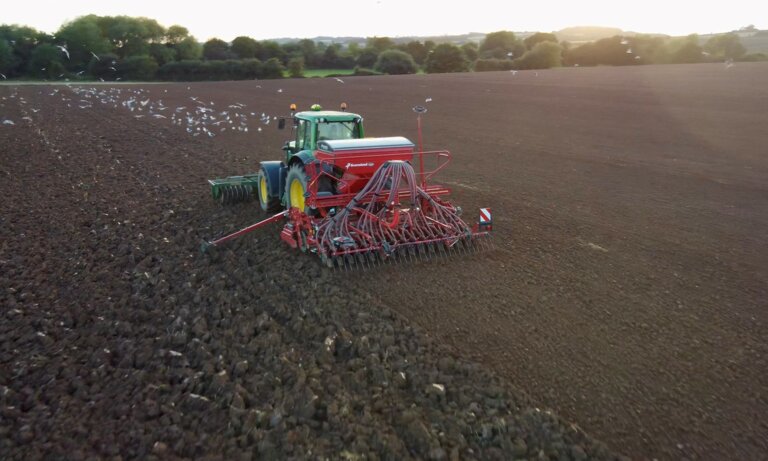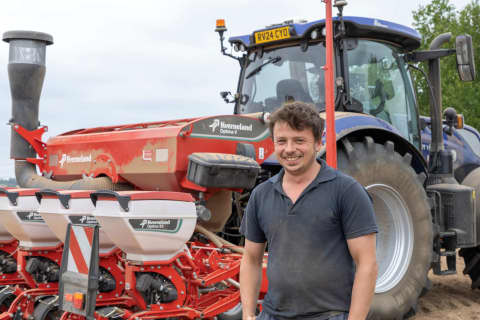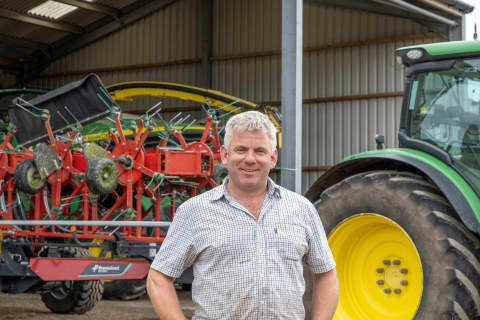“I like the lightweight but strong engineering, combined with a seed tank that sits over the harrow to keep weight close to the tractor.”
“Depending on the previous crop, we’ll either plough or make a pass with a tined cultivator ahead of the drill,” says Tim (pictured). “We’ve found that the key is to get your primary cultivation right, so the power harrow drill has very little work to do.”
At the 700-acre Bradeley Farm, Much Wenlock, Mr Benbow favours the system as a weatherproof solution to autumn cultivations. Growing winter wheat, winter barley and oilseed rape, he chooses to work closely to the preceding cultivation pass when planting cereals, so ground can be kept worked up.
“We do have some challenging weather patterns, and with topography rising to 850ft
above sea level, we need to be prepared to go, rather than sit it out,” he says. “Our aim is to be drilled-up by the first week of October, rather than miss out.” “In the very wet autumn of 2019, we successfully planted all but a few acres of headland. It was – and still is – the best solution for our farm,” says Tim.
His latest model is a 4m e-drill Compact with an S-series power harrow supplied by Battlefield Machinery, which replaced an i-Drill. Staying with a cracker packer roller, he chose CX-II coulters with press wheels.
“I like the lightweight but strong engineering, combined with a seed tank that sits over the harrow to keep weight close to the tractor,” he says.
“CX-II is a big improvement,” he adds. “We do have some varied soil types across our fields, and the press wheels do a great job of boosting seed to soil contact, while the coulters deliver a very consistent planting depth. And I’m a big believer in rolling, to reinforce that seed to soil contact.”
Used with a 4m folding front press and carried on a 180hp JD 7530 shod on 710 tyres, he says the outfit is light on its feet, when in work. “The front press helps enormously, rather than just carrying a weight block,” he says. “It means we can run the power harrow to the required seed depth, and cover up to 60 acres/day at speeds from 6-10mph. My best day has been 100 acres.”
“Crop emergence across the farm has been superb, and we’re using seed rates on cereals from just 100-125kg/ha,” he adds. “With ISOBUS and an IsoMatch Tellus GO screen, the next step is to look at variable rate seeding.”

